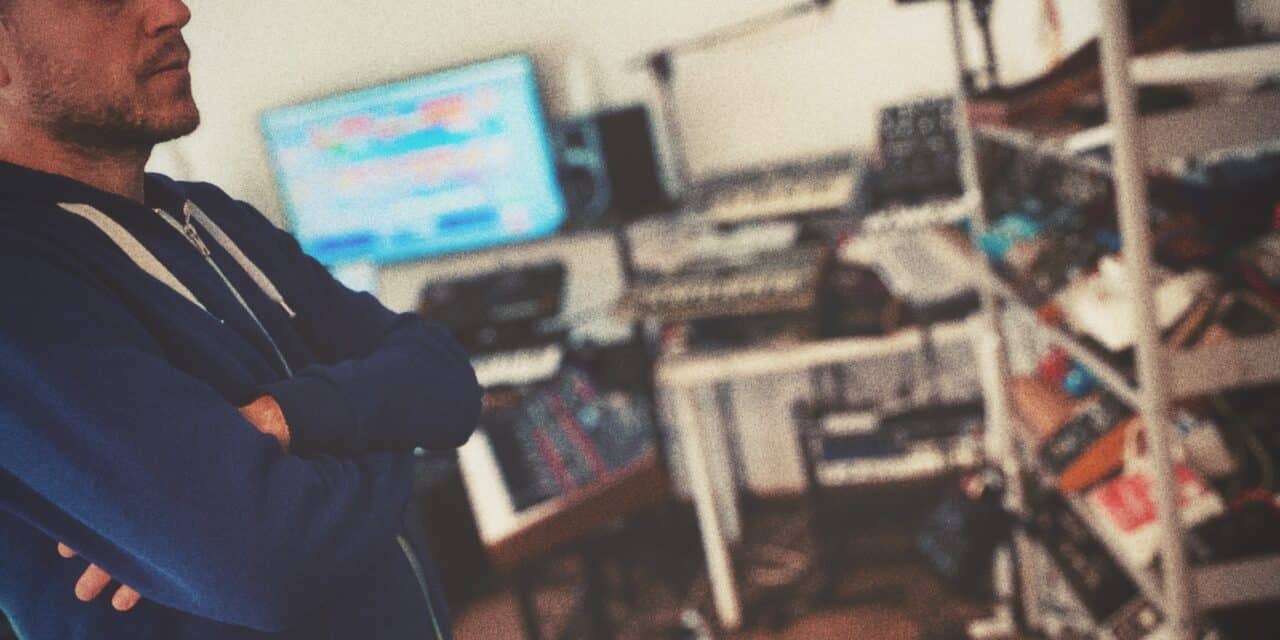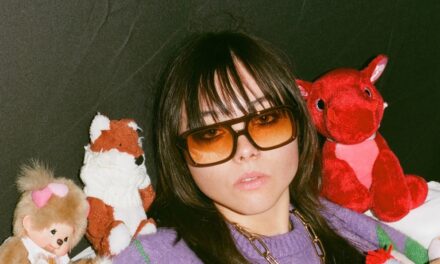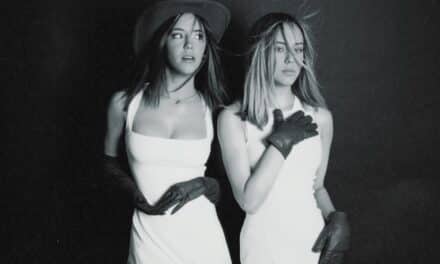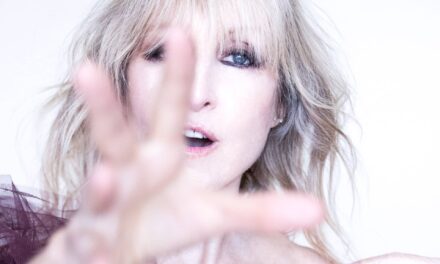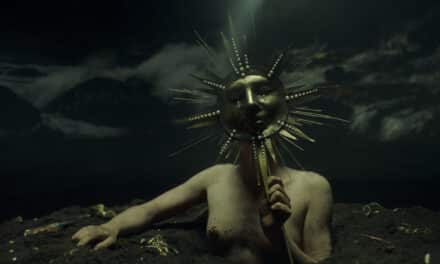Drift too far from shore and you might find yourself somewhere strangely beautiful. That’s the vibe behind Watercolored, the artistic moniker of singer, producer, and sound voyager Itai Bauman, whose debut concept album Tears of the Sea arrives April 29, 2025—and yes, it’s as fluid, emotional, and vast as it sounds.
Forget singles chasing TikTok virality. Tears of the Sea is a slow-burning, cinematic odyssey—more arthouse film than playlist filler. Bauman, who studied at Rimon Contemporary Music School in Israel, sharpened his production blade at Catalyst Berlin, and earned a Master’s in Composition for Media at Thinkspace Education, has built a sonic world that’s less about catchy hooks and more about emotional undertow.
“This album portrays a journey through the oceans outside and within,” Bauman says, and he’s not exaggerating. Inspired by everything from the prog-sheen of Porcupine Tree, the orchestral psychedelia of Mercury Rev, to the baroque wit of The Divine Comedy, Tears of the Sea isn’t here to make noise—it’s here to drown you in it.
Opening with the spoken-word eeriness of “A Dream” (“You are in a small boat in the middle of the ocean. You are alone.”), the album balances philosophical isolation with glimmers of hope. It’s an emotional rip current that moves from the aching propulsion of “The Chase”, to the shimmering lullaby textures of “Waterflowers”, to the nocturnal cityscape of “Ocean Stream”, recorded from a rooftop in Berlin.
Each track flows into the next, stitched together with a palette of analog warmth, sweeping strings, and Bauman’s haunting vocal presence. There are no sharp corners here—just gradients, shadows, and glistening waves of melancholia.
The whole thing feels hand-painted. Maybe that’s why Watercolored fits so well as a name. This isn’t just a project, it’s a canvas—one dipped in salt, memory, and the kind of quiet you only find underwater.
In a music landscape obsessed with fast gratification, Watercolored’s Tears of the Sea is a slow descent into the depths—and a gentle reminder that some journeys are meant to be taken with eyes closed, heart open, and no land in sight.
Your album title Tears of the Sea already sounds like a poem. What broke the dam—what was the first moment you knew this project had to exist?
This project was already forming around 8-9 years ago, while I was living in Berlin. Most of these songs were written within a few years, which included living in India, Tel Aviv and then Berlin. As some songs were written while living on the ocean in India, with the sound of crashing waves to accompany you at all times, the sea became a very present element in the writing. Then I was studying electronic music production in Berlin, and I discovered that it was difficult for me to produce these songs with electronic direction and with the knowledge that I had. So I put it aside temporarily. Only after completing my masters in composing for film did I feel I can revisit the project with the production knowledge I now had, that I had all the colors I needed to paint the songs with – Orchestral, electronic, organic. Then the production started.
You describe the album as a journey through the “oceans outside and within.” What were some of the inner storms you had to weather while making this record?
The album portrays a real emotional journey that I had in my personal life. I had recovered from a near death experience around the time I released my solo album in Israel, in my mid 30s. Something was calling me to travel in India, and I went for the first time in my life alone on a trip that was forming and evolving on its own, as a travel experience in India can be. Another thing that happened there – my songwriting was starting to emerge in English for the first time. And it was going deeper than I could ever write and express in my mother tongue. I was also affected by a tragic passing of an old ex, and it stirred some emotional turbulence that I can recognise in some of the songs. Soon after coming back from India my parents separated, and I decided to leave my country and move to Berlin, with another trip to India in between. That included living again on the ocean, self discovery and growth, and more songs emerging. The leaving process from my homeland was painful but inevitable, and you can get a sense of that emotional turbulence in the first half of the album, especially in the songs “Ship”, ”Dominos” and “Pieces”.
There’s this aching solitude in the lyric “You are in a small boat in the middle of the ocean. You are alone.” Were you writing from personal experience, or is that voice speaking to something more collective?
This is my real life realisation, dealing with cancer at age 22. I had full support around me, yet a big part of the experience was just you dealing with your life turned upside down, and with endless nights at the hospital. And you have to encounter it alone, with yourself. Surviving can be an alone experience, and an empowering one. The loneliness came sometimes in the travel, and in the long winters in Berlin. This is not my moral position at all, I totally believe we are social creatures and the connection we have with our close ones is most valuable. But there is a part in me that always feels alone. And from a temporary isolation can also come creativity and growth.
From Israel to Berlin to Thinkspace—your journey feels as layered as the record itself. How have all these geographies shaped your sonic palette?
India played a key part in writing in English, self growth and connecting with the ocean.
Berlin was a place of music and sound exploration, and as I studied electronic music production I started gathering many synthesizers, effect pedals, drum machines. I connected them all and was constantly experimenting with sound, playing electronic music jams, the studio took up half of my apartment area at that time. I also participated in live impro-jams with other musicians and with video artists. Berlin is a great place to evolve and experiment, a magical and welcoming place to all kinds of art experimentation. Another thing about electronic music – Often the artist is also the producer, so I started producing music as well.
When moving to Barcelona, as I studied composing for picture with Thinkspace, my sonic palette expanded while creating soundtracks and writing more orchestral music. This completed a full circle from contemporary through electronic to classical, all while honing my new role as an artist/producer.
Porcupine Tree, Mercury Rev, The Divine Comedy—each artist evokes a different kind of grandeur. What have you borrowed from them, and what did you throw back into the sea?
From Porcupine Tree I borrowed some of the vocal harmony qualities and how to keep a rhythmic flow in a rich and dense production. Mercury Rev and The Divine Comedy – I was inspired by the intimate and emotional aspect of the songs while having a wide and rich orchestral production on a song. It’s a challenge to keep things personal and honest with a big production, and I find it quite rewarding when you can have each instrument and part supporting the core emotional dynamics of a song.
Two other songs deserve an honorable mention for their influence on the album and its ocean theme – Robert Wyatt’s “Sea Song” from 1974 and “Martha’s Harbour” by ‘All About Eve’ from 1988. Both of these songs opened a passage for me of strong emotional connection to the ocean within myself.
The album feels like a slow submersion—emotional, cinematic, sometimes hallucinatory. How much of Tears of the Sea is meant to be felt vs. understood?
I was trying to create an atmosphere for each of the songs, and with some to really evoke a feeling of sailing, being underwater, mystery, and other feelings within different parts of the songs. Every song has an intro and an outro that I wanted to help introduce the listener to each track’s unique little world as well as close the chapter when it ends. I hope that one definition of a good movie soundtrack – that the viewer’s experience is supported by it, not overshadowed by it, comes into play in the album as well. So yes, my hope is that the music here can be felt as much as understood, and that the experience of listening to the whole album can be an emotional and moving one.
Your alter ego Watercolored suggests something both ephemeral and deeply intentional. How do you separate—or blend—Itai the person and Watercolored the artist?
When you invent another persona that is not yourself, it can allow expressing your most vulnerable sides, going deep with more freedom and courage, because it’s “not me”. And then it is actually me, in my most open and honest. That can give space for a flow of creativity, whether in the writing part or in the arranging and producing part. While producing I could also dive back into the emotional essence of each song and allow for new creativity there, building the song in all its colors and textures, in order to support this essence to the most the song deserves. So the person and the artist can live side by side while supporting each other, and so can the writer and the producer.
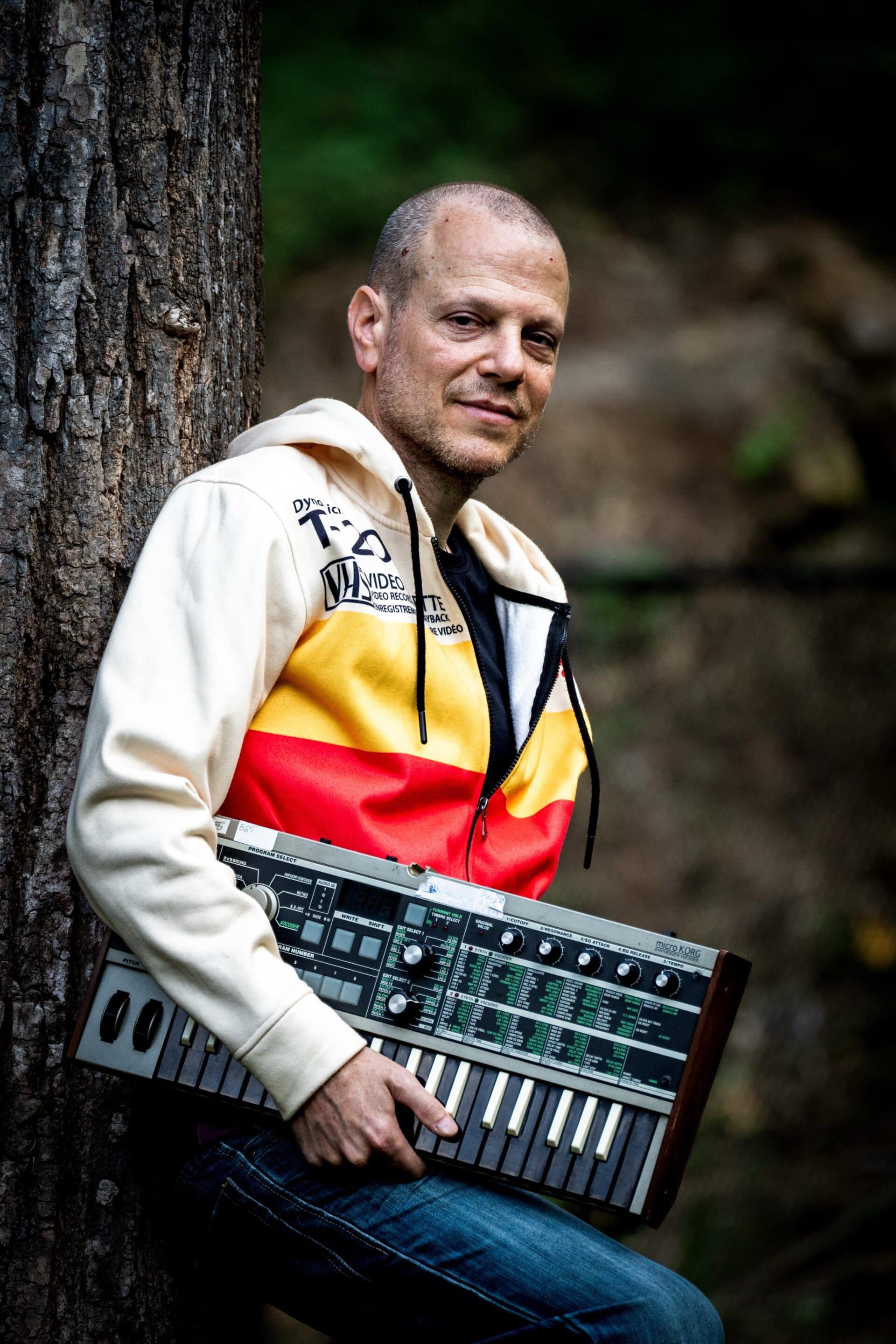
Tracks like “The Chase” and “Ocean Stream” feel like late-night confessionals. What role does vulnerability play in your creative process?
Vulnerability plays a big role in my creative process. I find that in order to write something that I resonate with myself, and then hopefully others, I need to get deep into the emotional realm and express it in an honest way. If it’s real, if it means something to you, it can resonate. And for that you need to really open yourself in order to allow the flow to take you there. In a way, that is my most vulnerable place for me, and in another way when creating I feel like I’m a vessel for something bigger than me. In the moment of writing it’s like channeling something through me, and then I can look at what I created with wonder. A sense of accomplishment while feeling humbled, as the ego is not involved.
If Tears of the Sea were a film, what would the opening shot look like? And who’s directing it?
I totally see the opening track – “A Dream” as describing an opening shot. It would start with a close-up shot of someone waking up in a small boat in the middle of the ocean, alone, without remembering how they got there. Then zooming out slowly to see the vastness of the ocean compared to the tiny boat. It is not clear if this is a dream or reality for the protagonist, as his consciousness shifts between being the ocean, the wind, the plant, and back to himself alone in the ocean. I see Christopher Nolan directing it, and it would be a thought provoking immersive story with questions of identity and transformation.
After sailing through so much introspection and turbulence, where do you hope this album deposits your listeners? What shore are you trying to leave them on?
I see the story of the album quite like a book, with the songs as chapters. The opening title acts as a prologue, introducing the essence of the story in a dreamlike stream of consciousness. The last song is an epilogue that takes place after the story has ended. The story evolves from a place of difficulty and struggle, and through movement and growth it gets to a more bright and happy ending, of finding connection and love.
I hope to leave the listeners on that bright note, after going through their own emotional journey with the album.

